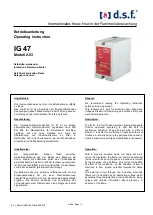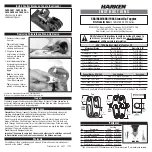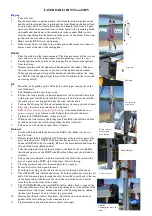
Hitec Luxembourg S.A. |
5, Rue de l’Église, L-1458 Luxembourg
www.hitec.lu | [email protected] | Tel.: (+352) 49 84 78 - 1 | Fax. (+352) 401303
File Name: HTCA_003-DADS-UserManual.docx
Document Type: End User Manual | Version date: 01/05/2010 | Last Printed: 15/02/2011
Page 80/81
Mixing RUN
A process during which the DBP oil is mixed into the carbon
black or silica sample while recording the mixing torque as a
function of the DBP quantity until a stop condition for the run
occurs.
Motor Speed [rpm]
The speed of the drive motor, which is also the speed of the
main (left) rotor.
Normalization
Correction algorithm for the measured DBP value. Correction
values based on measurements of standard reference blacks
(see ASTM D2414 for details on procedure). There are 8
correction tables defined, 4 for Proc. A and 4 for Proc. B, for
method normal or compressed and for class hard or soft. So
far, Proc. B uses the same target values as Proc. Until a
specific such values are published by the ASTM D24
committee.
Polynomial
A polynomial function of 3rd order is calculated with the
method of the least square deviation. For a normal run, all raw
data values are considered between the beginning point
determined by the torque threshold and the end point
determined by the stop. In case of a valid run but which was
stopped by the operator (highest torque raw value did not
reach the minimum torque), the operator must select
beginning and end point by moving the cursor on the PC
graphic display of the raw data mixing curve.
Settings
(applies for type H only)
Set of parameters for variable mixing conditions (rotor speed
in rpm and burette debit in ml/min)
Stop Condition
(for a mixing run)
A run is stopped if one of the following conditions is observed:
1. the torque raw data curve has reached the maximum
plus the run-out time
2. the torque raw data exceeded the torque measuring
range
3. the operator stops the mixing process
Condition 1 or 2 defines the end point of the data set to
calculate the polynomial.
TLS
(Torque Limit Switch)
The value for the shut-off point as used in the classic
approach of ASTM D2414 specification. This terminology is
taken from the description for type B Absorptometers in
D2414. In case of the type E model, this is the value for the
alarm set point.


































